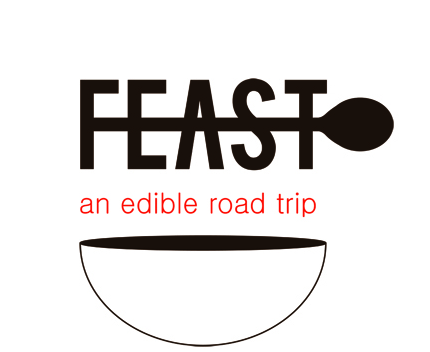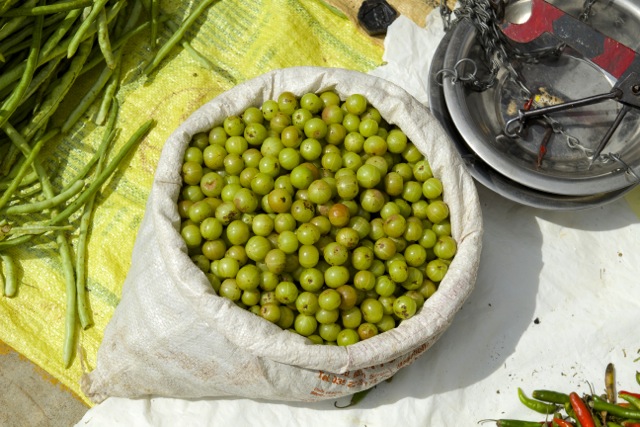Sri Lanka: Kandy, Kandy, Kandy
After meeting up and hitting the road with my World Nomads' Passport and Plate crew, we finally arrived in Kandy, a city with Bogambara Lake at its centre. The lake was constructed by King Sri Vikrama Rajasinha in the 19th century, with a square island that apparently used to be the king’s private bathing facility, and was connected to the palace by a secret tunnel. That is one expensive bathroom.
Today, the lake is often surrounded by barefoot pilgrims in white, who are on their way to visit the sacred Temple of the Tooth. But more on that in another post…..
My first impression of Kandy? It is abundantly green, the kind of verdant heaven one might dream of when lost in the desert. From the lake’s edges, the city rises up into the leafy surrounding hills, where our hotel was.
My second impression of Kandy? I didn’t care about second impressions, I just wanted to sleep. By the time we arrived in the city I’d been up for 36 hours, and was grateful to crawl into a comfortable bed.
Only in the morning did I discover my room had a deck, a view, and this warning:
Noted.
The day began with a breakfast spread for six, served to just one (me). After my first cup of Sri Lankan tea on Sri Lankan soil, I ate slices of fresh pineapple while heaping spoonfuls of fish curry and coconut sambal over string hoppers. Before this trip, the word ‘hopper’ had only brought to mind images of tractors or bugs, but that quickly changed over breakfast.
In Sri Lanka, hoppers aren’t just any food - they’re an absolute staple of the cuisine. String hoppers are flat clusters of roasted rice noodles, usually the size and shape of latkes. They’re a bit chewy, quite filling, and their lacy design is perfect for absorbing spicy sauces. I also had a bowl of creamy, cool buffalo milk curd and treacle, a classic Sri Lankan pairing. Like maple syrup, treacle is made from the sap of a tree - the kithul palm - and is also made into a hard sugar called jaggery. Bowls of curd became my favourite breakfast during the trip, and I usually managed to empty every pitcher of treacle brought to me.
After my enormous meal, I met up with Asanga and Seth for our first day of exploring, and we headed down the hill to check out Kandy’s special Friday market.
Each week, in a parking lot wedged between the lake and an old British prison, dozens of vegetable and fruit vendors lay out their goods for the locals to browse. It’s a colourful spread of people and food, and it was my first real experience in the Sri Lankan heat.
At times it was so hot, it felt like the sun sat just a few feet above my head. And I was in Hill Country, where everyone claims it’s cool!
The market was busy and diverse, full of foods I didn’t recognize or had never seen in situ.
There were trucks with bananas tumbling off their flatbeds, mountains of shaggy brown coconuts, and vegetables the size of baseball bats.
I very quickly learned the difference between an immature jackfruit, which is chopped (very skillfully) with machetes and utilized in dishes as a vegetable, and a mature jackfruit, which has quickly transitioned to a sticky fruit with a sweet, banana-like flavour.
I wandered amongst neatly-arranged piles of ginger, tapioca root, okra, squash, peppers, mangos, avocados, eggplants, onions, beans, and branches of dark green curry leaves. They’re another staple of Sri Lankan food, and something with which I am now completely obsessed. In Kandy, the vendors bound up the branches with equally-fragrant stalks of pandan, like beautiful – and very green - edible bouquets.
While at the market, just one day into my trip, I learned something about Sri Lankans as a people: they are very, very friendly. As I moved through the crowds, I was met with nothing but warm, somewhat shy smiles. No one approached me as the obvious outsider, or pushed their product on me, or asked me for money. They just let me be, answering my requests for pictures with an easy-going nod.
I should also mention that when I say ‘nod,’ I really mean ‘wobble’ – it’s much more of an ears-towards-shoulders situation than a chin-towards-chest. There is no direct translation for the head wobble, as famous in India as it is in Sri Lanka, but it generally means “sure,” or “I understand,” or is simply a way of acknowledging someone. The head wobble is so incredibly ubiqitous, it wasn’t long before I had the desire to answer a wobble with a wobble, and my head began to feel loose, like my neck was a slightly-uncoiled spring. This bobble-head habit was something I noticed Seth also picked up, whether he was conscious of it or not.
After the market, we wandered down the street and met Mohammed, a Muslim street food vendor who’d just returned from the mosque.
He has a modest stand, tucked into a gap within the city wall, and his setup includes a sack of tapioca root, a small cutting board, a knife, and a pot of hot coconut oil over a gas flame. He spends his days chopping the dense tapioca into matchsticks or cubes, then frying them in oil until they’re pale golden. As customers come, he scoops the tapioca into small paper pockets made from students’ old homework, and sprinkles them with chili salt. We bought a bag, and they were a crispy, satisfying snack.
Mohammed also had a bowl of ‘Ceylon olives,’ which are made with a type of fruit that’s indigenous to the island. They looked similar to European-style olives but had a softer texture, and are apparently first boiled, then crushed, and pickled with salt, pepper, chili, sugar, and water. I would absolutely snack on them daily if I lived there.
Later in the day, we visited the Royal Botanical Gardens. Here are some pictures from our walk amongst the bamboo, jackfruit trees, and orchids. Plenty more food (including spices) to come…..
-LA






